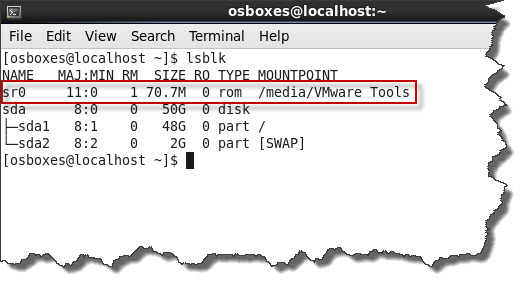
The Concept of Mounting
In the world of Microsoft Windows, there exists a single directory tree for every storage component. A storage component is considered to be a drive (i.e. CD-ROM, hard drive, thumb drive, et al.) To be specific, when you click on your C: drive in Windows Explorer, the directory structure of that drive is displayed. These are the directoreis that are associated with that drive. When you click on your D: drive (if you have one), a different directory structure is displayed. This new directory structure is specific to the D: drive.
Unix systems have a single directory tree. All accessible storage must have an associated location in this single directory tree.
Mounting is the act of associating a storage device to a particular location in the directory tree. For example, when the system boots, a particular storage device (commonly called the root partition) is associated with the root of the directory tree, i.e., that storage device is mounted on / (the root directory).
Let's say you now want to access files on a CD-ROM. You must mount the
CD-ROM on a location in the directory tree (this may be done
automatically when you insert the CD). Assuming the CD-ROM device is
/dev/cdrom and the chosen mount point is
/media/cdrom. The corresponding command is
mount /dev/cdrom /media/cdrom
After that command is run, a file whose location on the CD-ROM is
/dir/file is now accessible on your system as
/media/cdrom/dir/file.
When you've finished using the CD, you run the command umount
/dev/cdrom or umount /media/cdrom (both will work;
typical desktop environments will do this when you click on the “ejectâ€
or "safely remove" button).
Why do we need to mount the CD-ROM if we already have access to it in
/dev/cdrom?
In other words, why do we need to create a separate "mount point" under
/media/cdrom? Does this mean that the filesystem in the
CD-ROM is not available if we access it from /dev/cdrom.
Why does the CD-ROMs filesystem hierarchy "come alive" when we "mount" it?
It is possible to read and/or write /dev/cdrom (e.g. using
dd or cat) but when this done, you are just reading
or writing the raw bytes of the device. That can be useful in various
circumstances (like cloning a partition), but generally we want to see the
directories and files stored on the device.
When you mount a device, you're telling the kernel to use a layer of software (the filesystem driver) to translate those raw bytes into an actual filesystem. Thus mounting a device associates the filesystem on that device to the directory hierarchy.
Determine Partition/Mount a Directory is on
To determine the partition or mount point a specific directory is located or associated with, use the following command:
df -P file/goes/here | tail -1 | cut -d' ' -f 1
Commands
lsblk
Use lsblk to to list information about all available, or specified, block devices.

In this screen shot, the name of DVD drive is sr0.
Create a directory that will be the mount point for the device sr0.
This is done with the mkdir command. The option -p, or --parent
option, creates the /mount directory if it does not exist
already. Ensure you have the proper permissions.
mkdir -p /mount/DVD
mount
Use mount to mount a filesystem.
Mount the sr0 device to the directory, or mount point. The
-t option defines the filesystem type. The -o
option, or --options, is used to specify mount options.
mount -t iso9660 -o ro /dev/sr0 /mount/DVD
umount
Use umount to unmount a filesystem.
.ico)